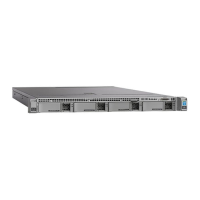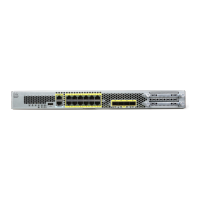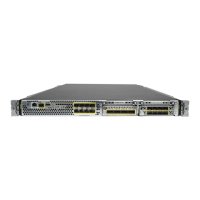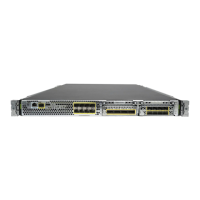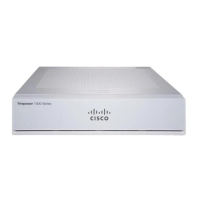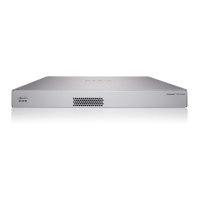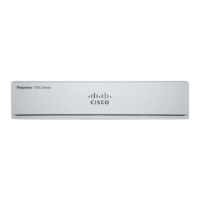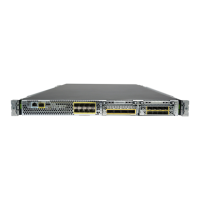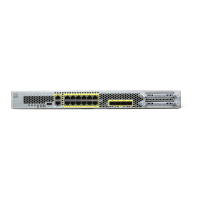Step 2 Connect the network cable from the Ethernet 1/1 interface to your wide area network (WAN) modem. Your
WAN modem is your branch's connection to the internet and will be your firewall's route to the internet as
well.
Step 3 Cable your inside end points to the switch ports, Ethernet1/2 through 1/8.
Ethernet 1/7 and 1/8 are PoE+ ports.
Step 4 (Optional) Connect the management computer to the console port.
At the branch office, the console connection is not required for everyday use; however, it may be required
for troubleshooting purposes.
Power On the Firewall
System power is controlled by the power cord; there is no power button.
The first time you boot up the threat defense, initialization can take approximately 15 to 30 minutes.
Note
Procedure
Step 1 Attach the power cord to the device, and connect it to an electrical outlet.
The power turns on automatically when you plug in the power cord.
Step 2 Check the Power LED on the back or top of the device; if it is solid green, the device is powered on.
Step 3 Check the Status LED on the back or top of the device; after it is solid green, the system has passed power-on
diagnostics.
Step 4 Observe the Status LED on the back or top of the device; when the device is booting correctly, the Status
LED flashes fast green.
If there is a problem, the Status LED flashes fast amber. If this happens, call your IT department.
Step 5 Observe the Status LED on the back or top of the device; when the device connects to the Cisco cloud, the
Status LED slowly flashes green.
If there is a problem, the Status LED flashes amber and green, and the device did not reach the Cisco Cloud.
If this happens, make sure that your network cable is connected to the Ethernet 1/1 interface and to your WAN
Cisco Firepower 1010 Getting Started Guide
131
Threat Defense Deployment with CDO
Power On the Firewall
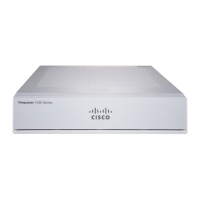
